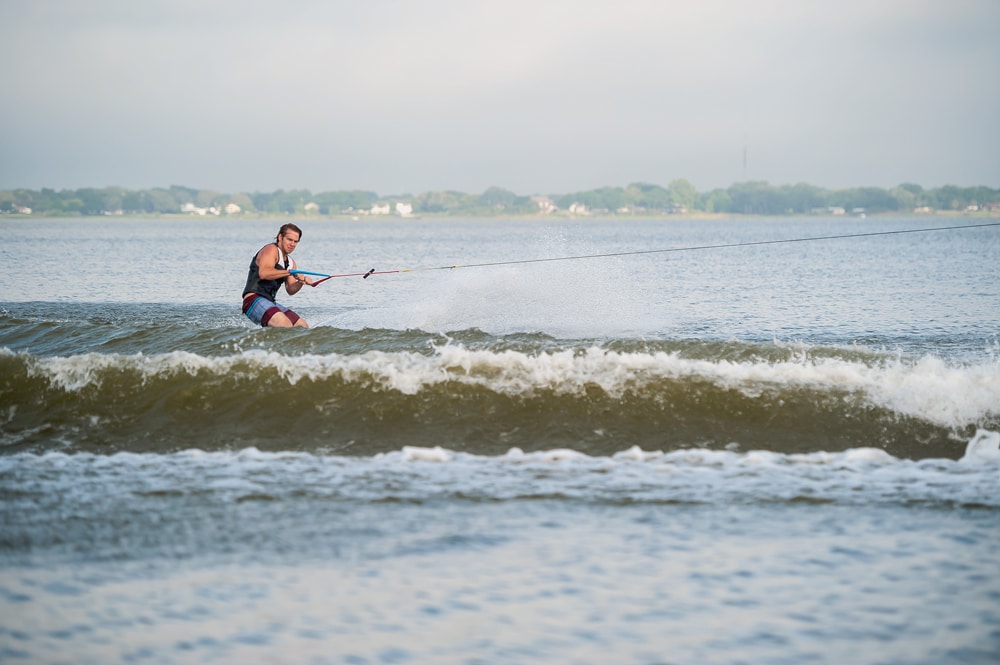
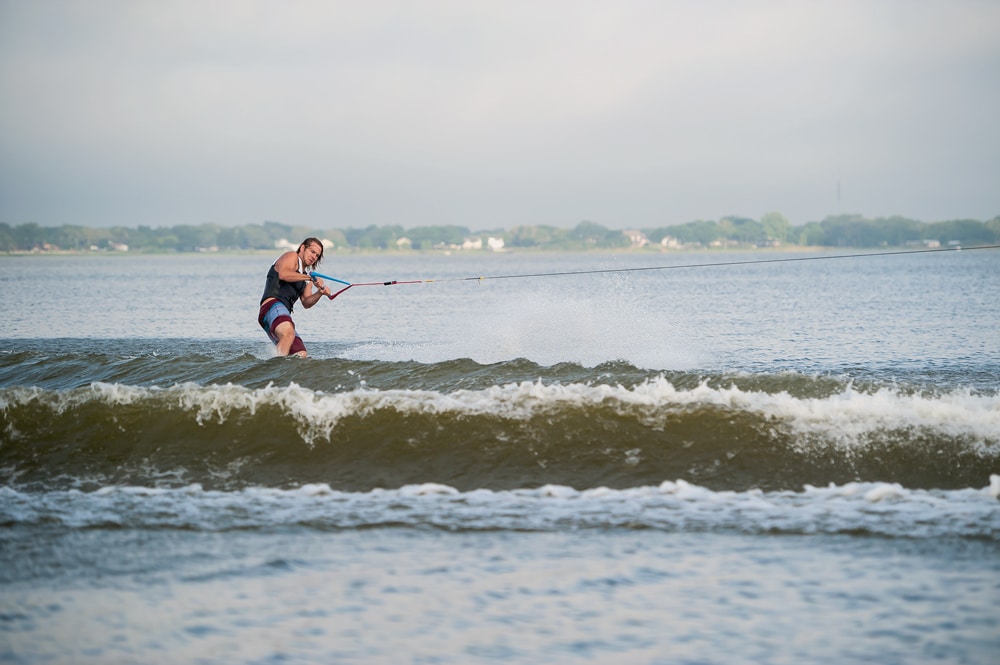
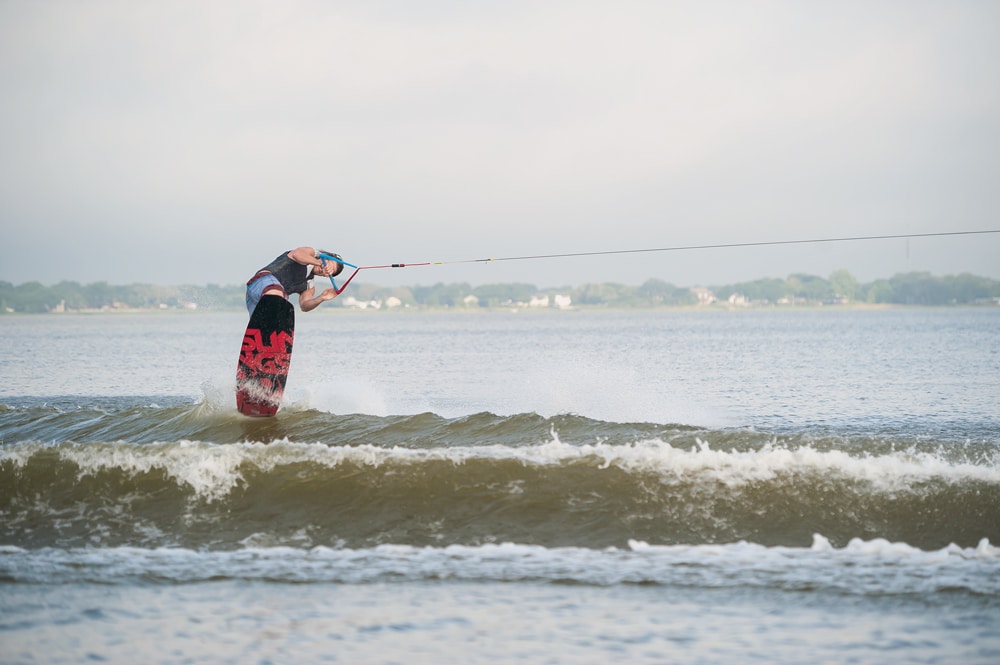
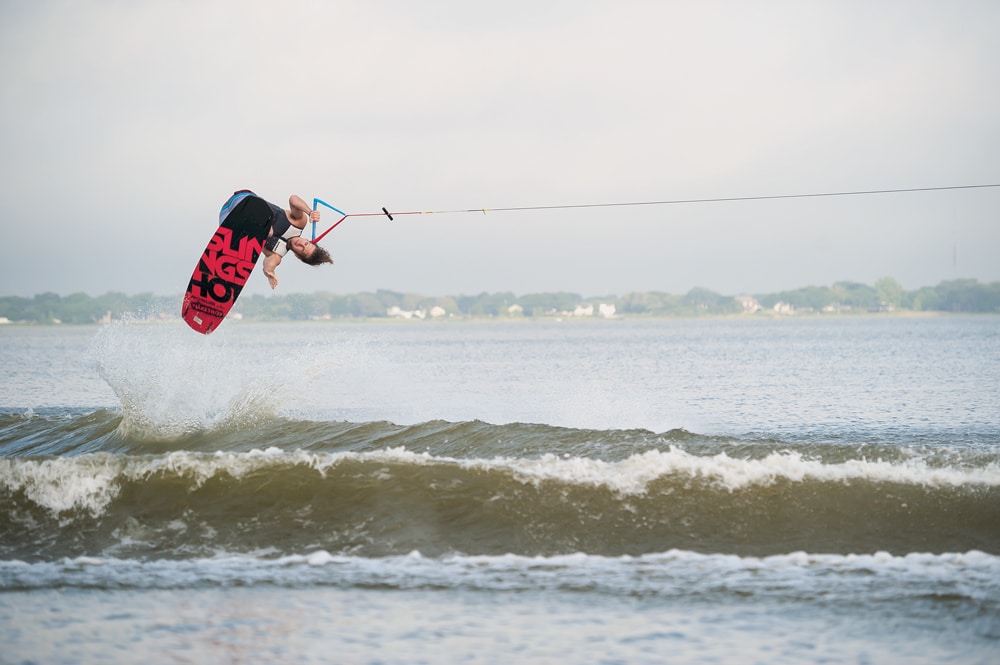
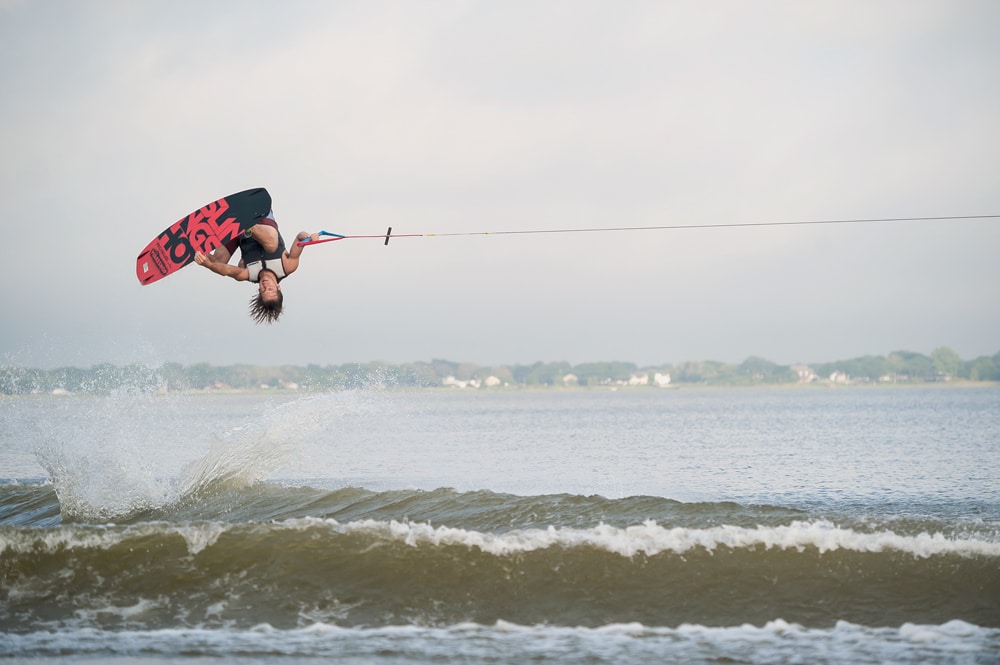
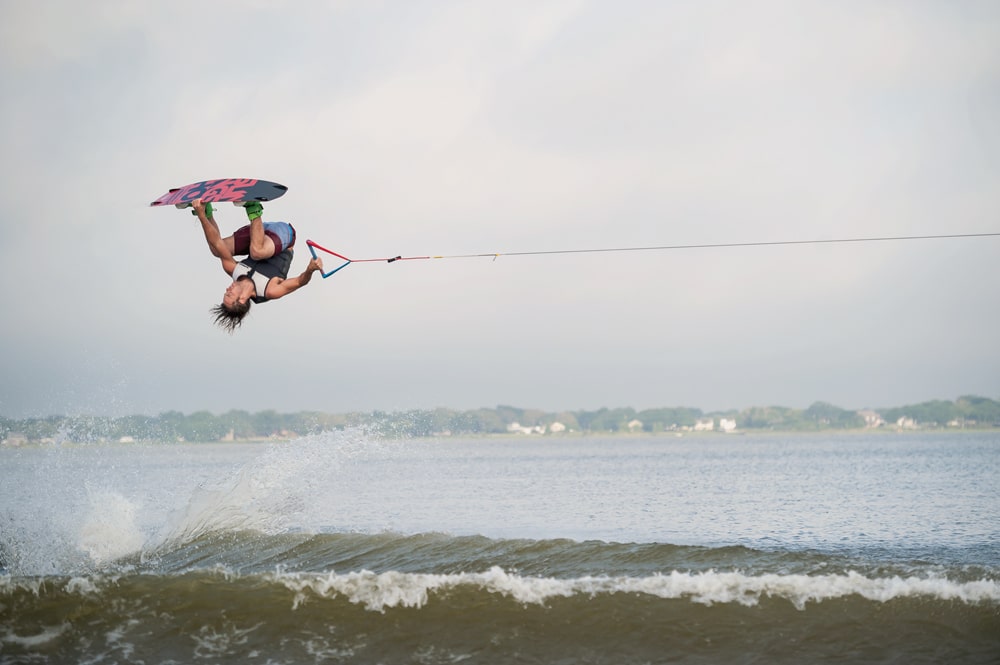
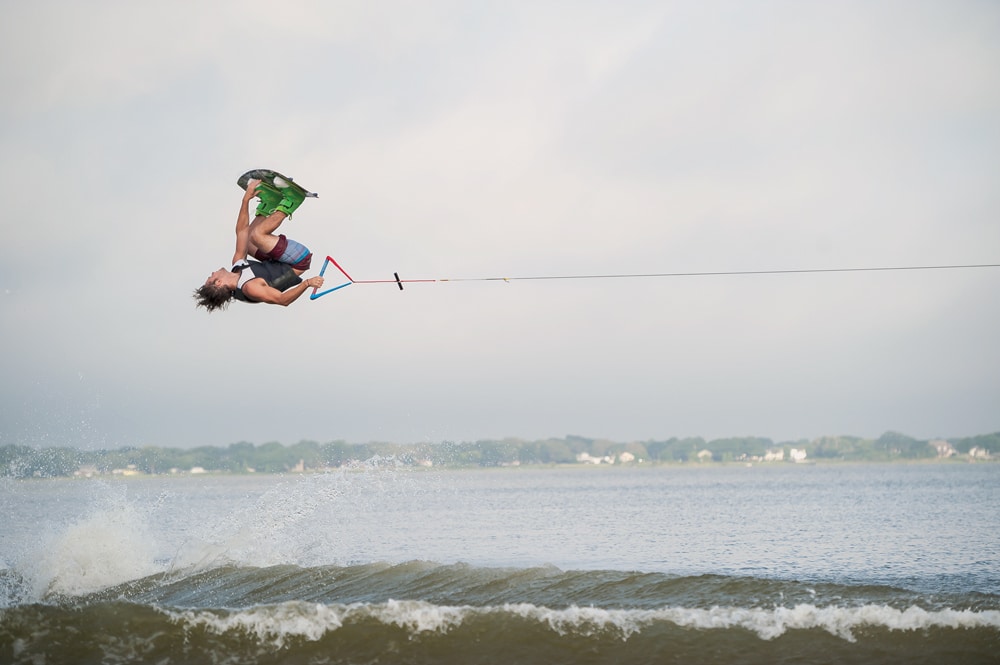
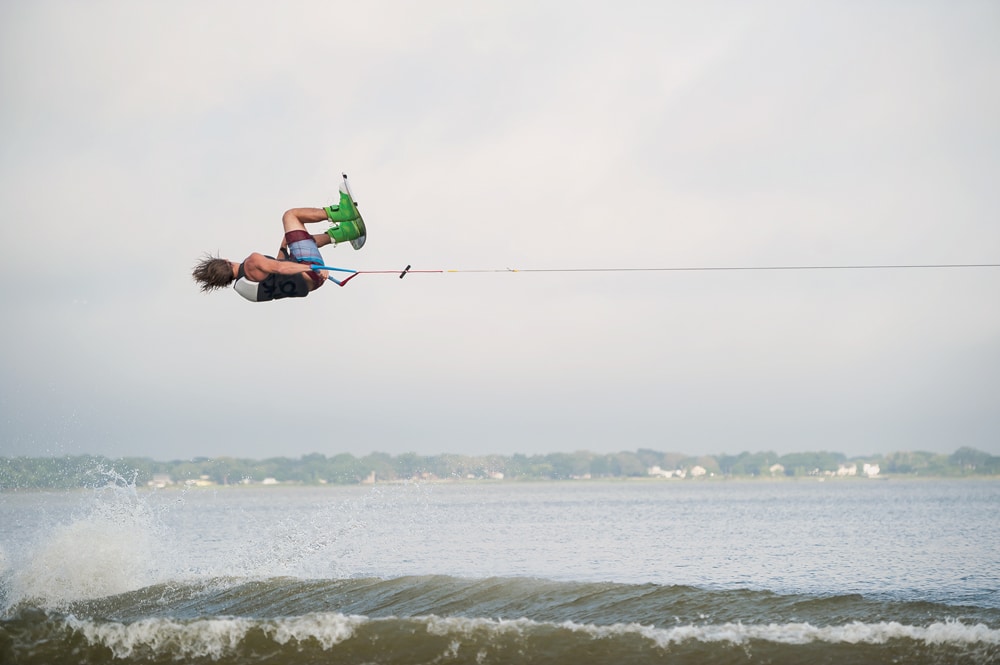
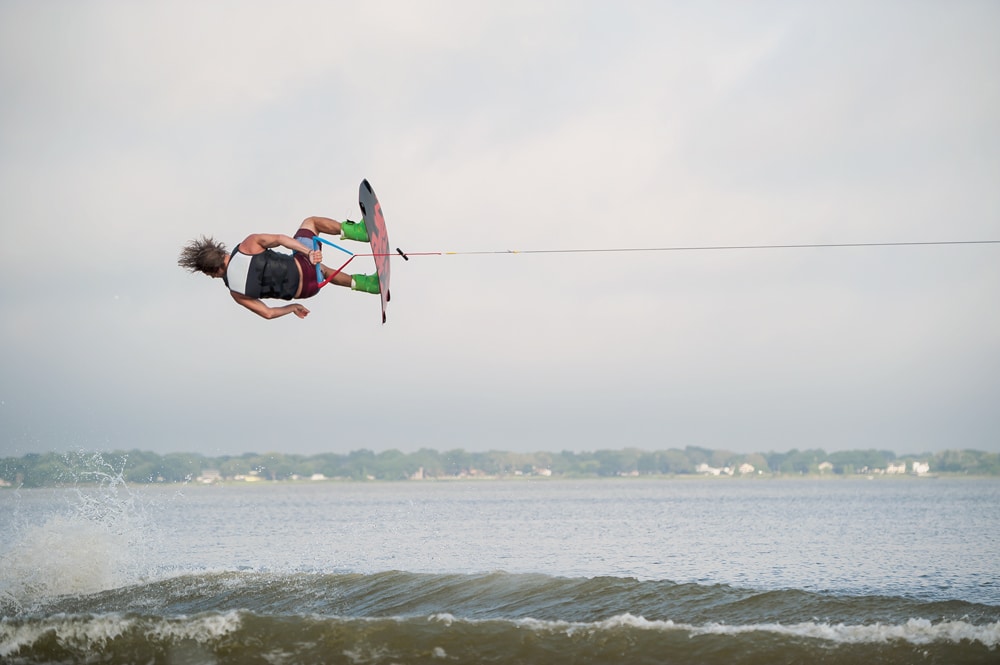
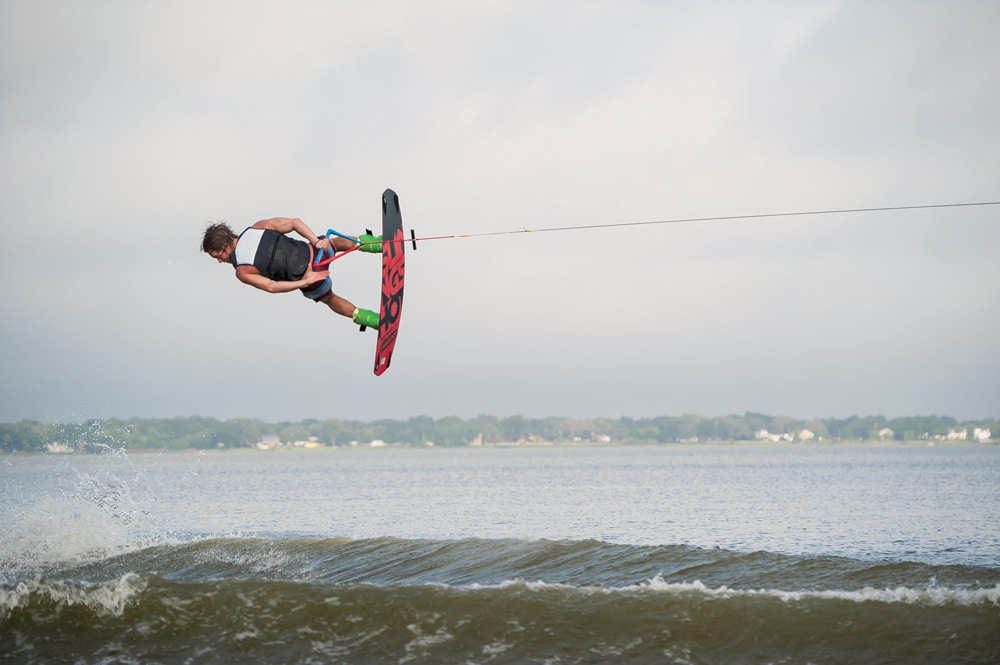
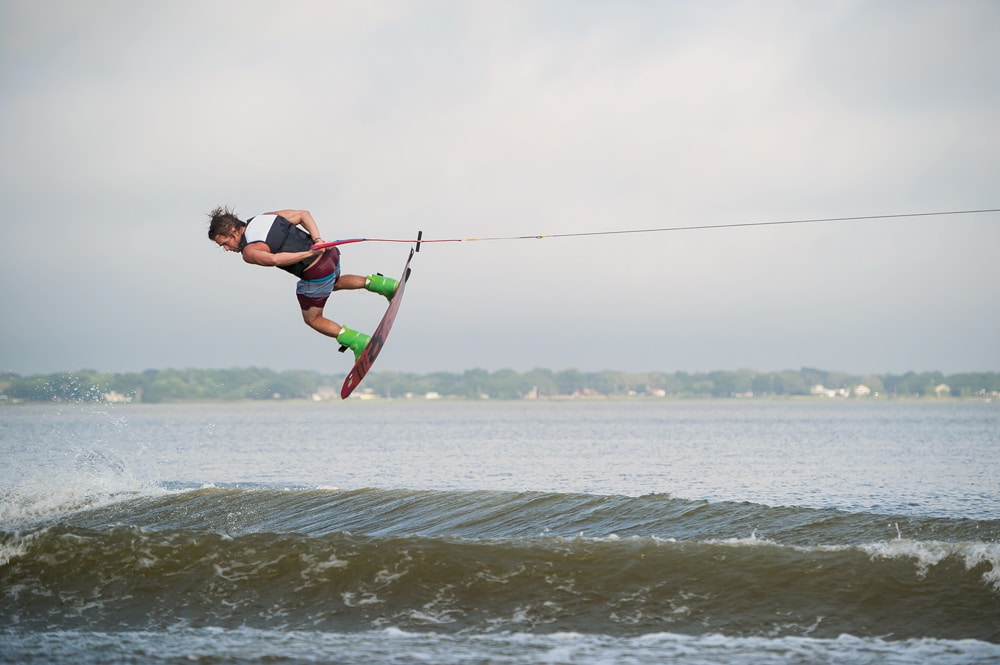
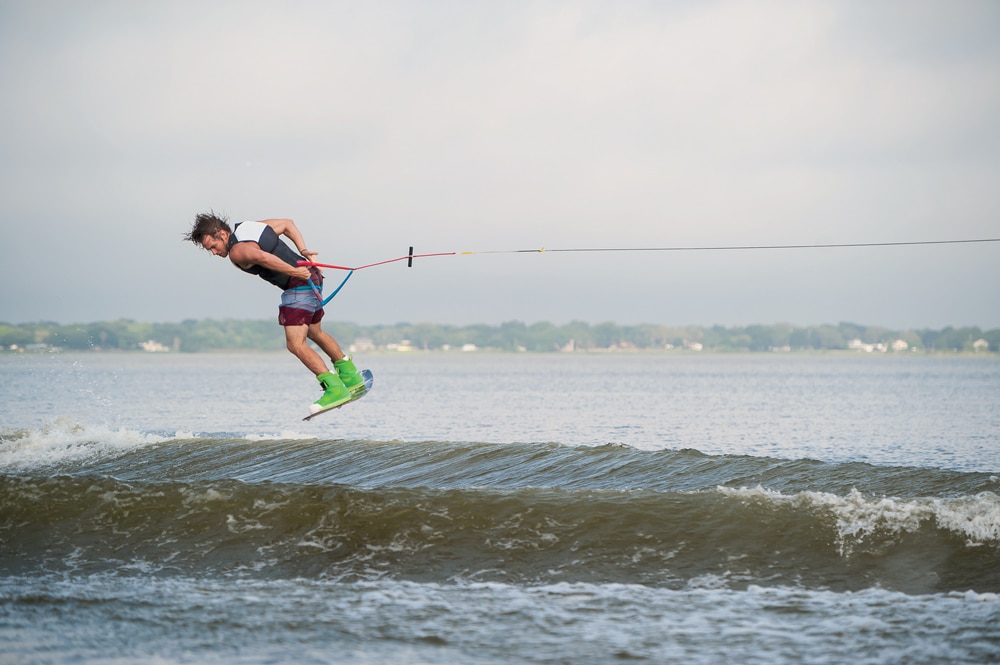
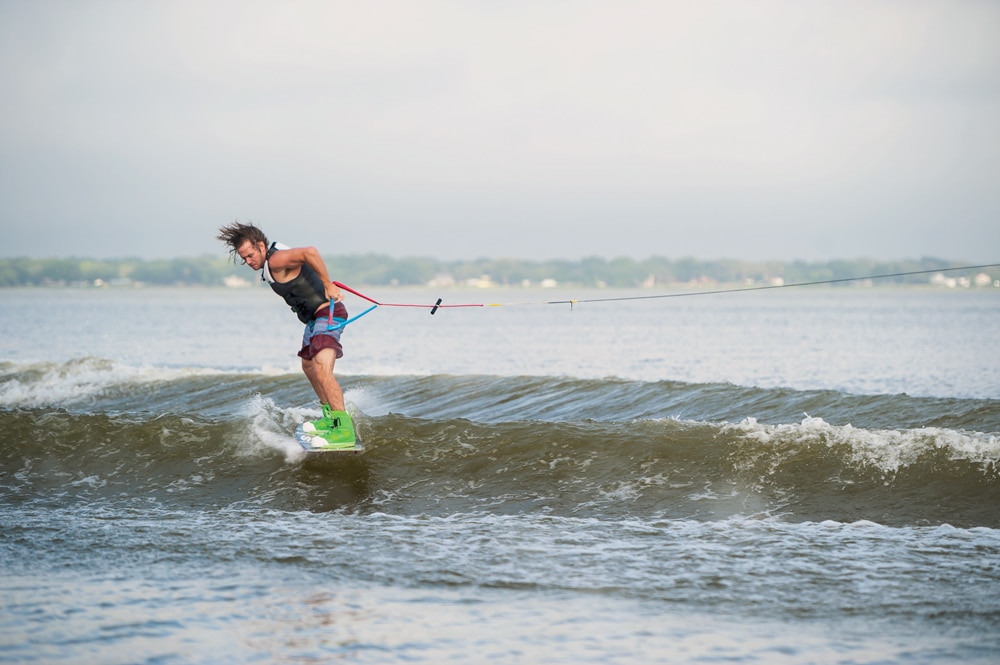
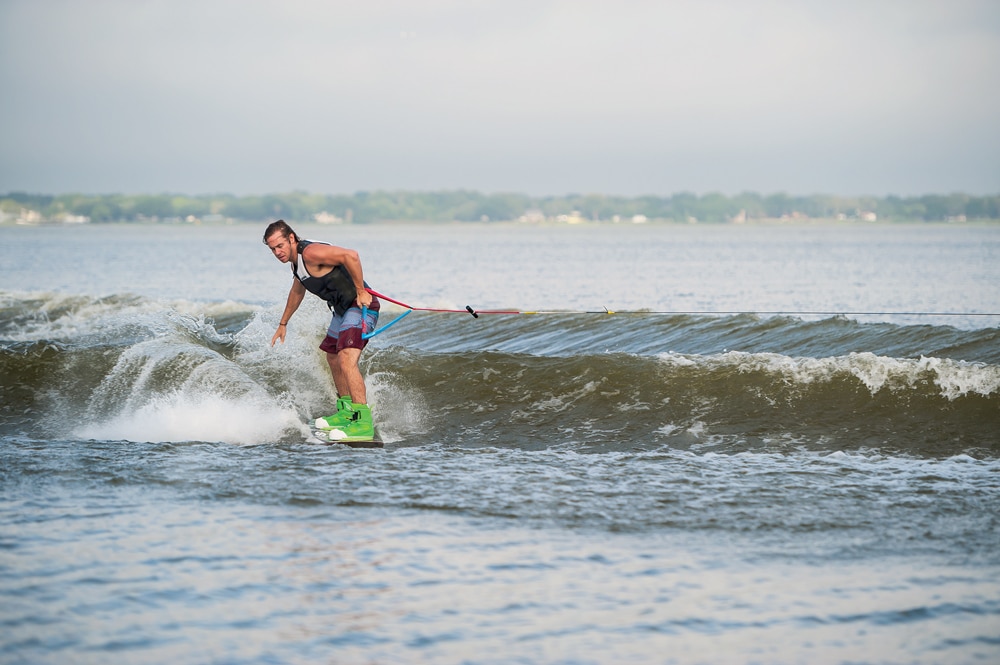
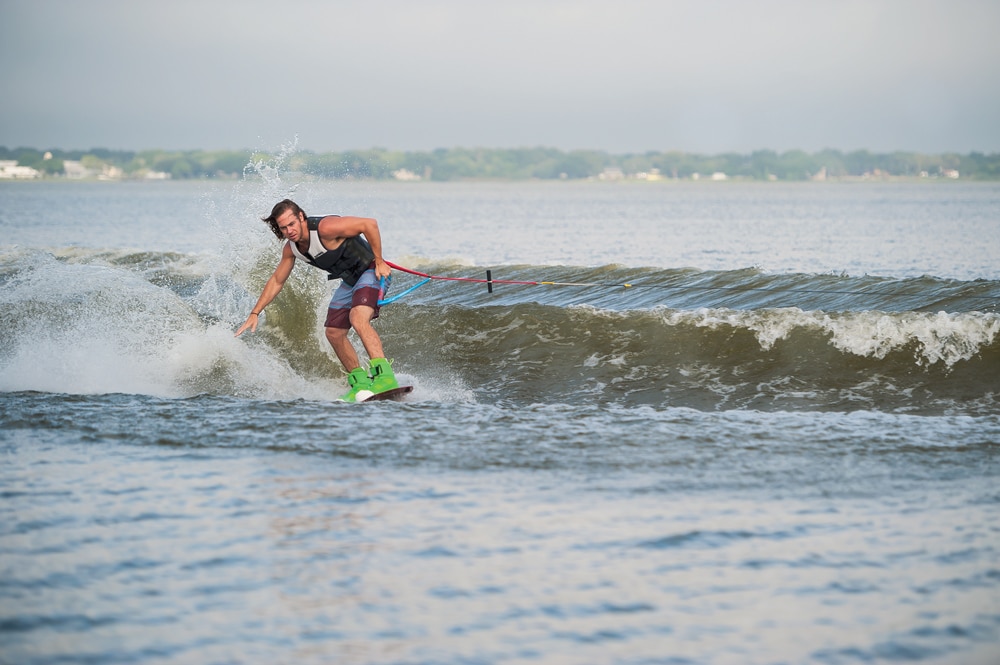
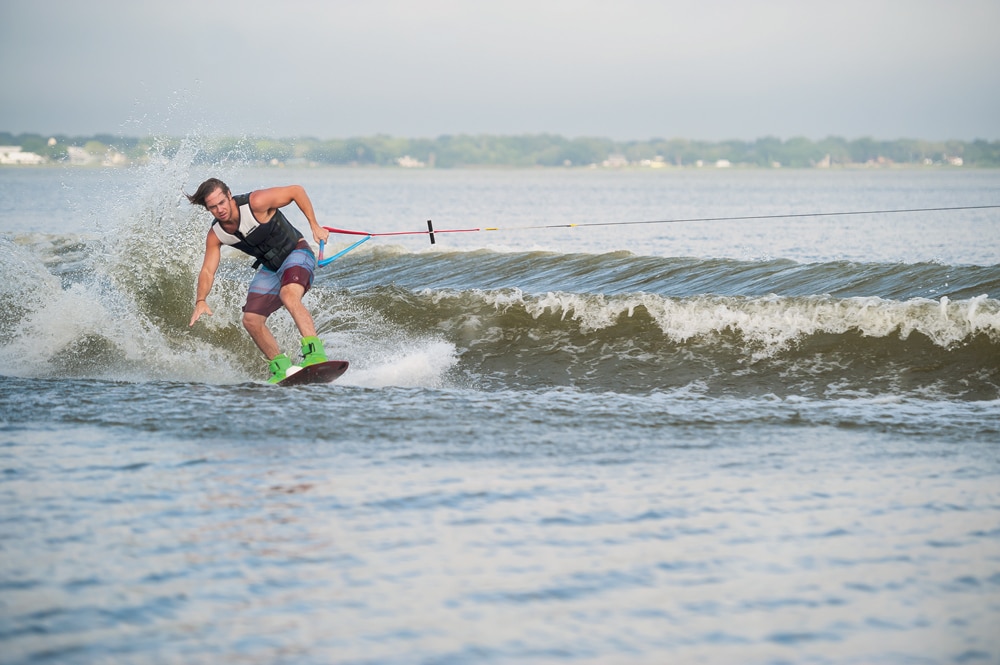
This was probably my favorite “How To” article from all of 2014. Not only is Jeff fun to work with, but his roll-based maneuvers are on point. I am particularly fond of teaching these tricks too. So, take a moment to digest this How To article page by page — your riding will thank you for it.
How To: Roll-Based Maneuvers | Words: Brandon Judd | Photos: Bill Doster
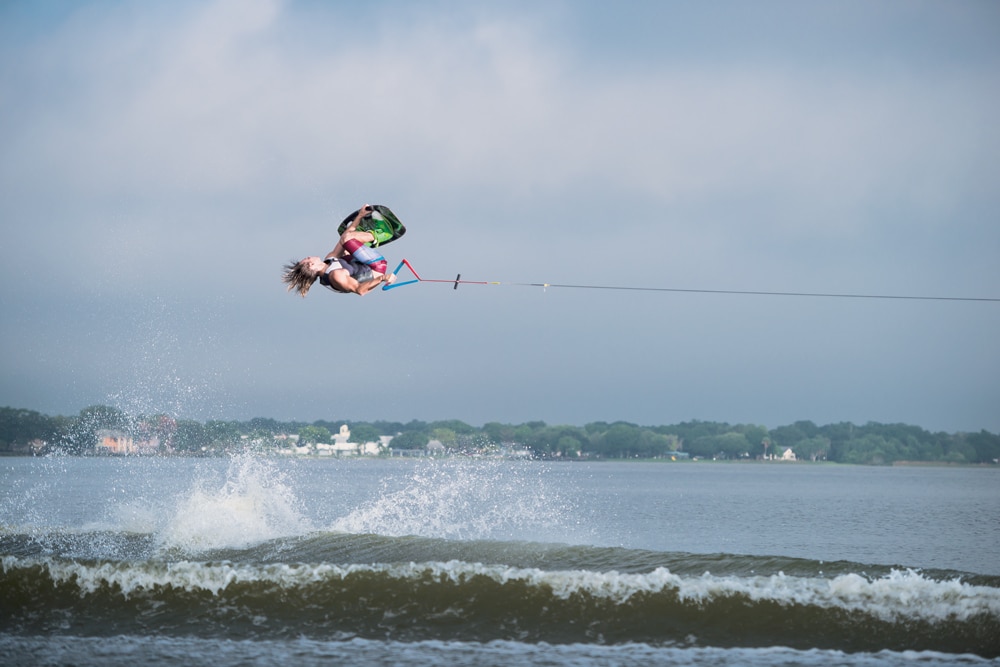
Roll Out with Jeff House
Many of you have passed the highly anticipated first invert milestone — especially after reading the instruction in our May issue — and chances are, you probably have a heelside back roll under your belt by now. If you fall into that category, take notes because we’ve teamed up with Jeff House to help you break past the base invert plateau that too many riders get stuck in during the learning process.
Before you take your heelside back roll to the next level, let’s talk about some prerequisites that will assist you dramatically in your quest for technical and stylish roll-based maneuvers.
First of all, trampoline training and air awareness are key building blocks for proper muscle memory. Learning side flips and front flips — with frontside and backside 360s, both switch and regular stance — on the trampoline is ideal to accelerate your learning on the water. Keep in mind that the load and release take-off is different from the wake to the trampoline, but the air awareness will pay off significantly in the end.
Next, you will want to have both the progressive and Mexican variations of the heelside back roll dialed in. The progressive back roll’s rotation is a side flip mixed with a bit of an air Raley, while the Mexican back roll’s rotation is more like a gainer-style front flip.
The last skill to acquire is optional but highly recommended. Learn switch back rolls — in fact, learn everything switch shortly after you learn it regular. Many riders skip this step for obvious reasons. However, you’ll eventually have to force yourself back through the learning process, which will be far more difficult in the long run. Learning it switch will open up your mind to how the trick functions, help improve your normal stance, and speed up the learning process for related moves down the road.
Need proof that this works? Take a look at Jeff’s back-to-back indy rolls to blind. Can you tell which one is switch? We can’t. Jeff says: “I like to do things back to back and try to make them look the exact same. It’s boring, but it’s part of my life.”
Click here for ROLL TO REVERT——>
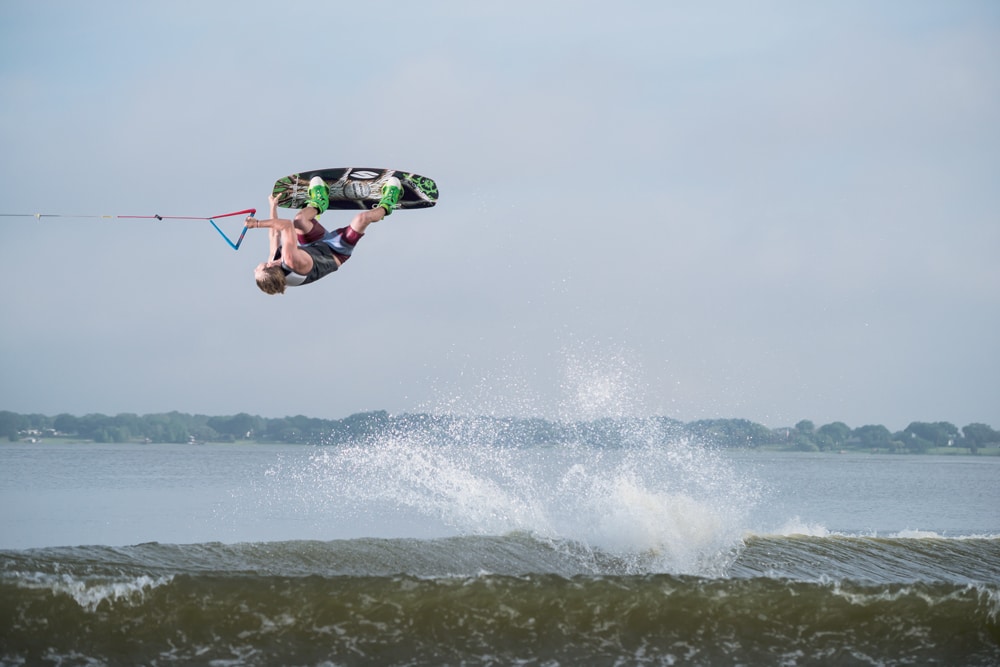
Heelside Back Roll to Revert
In order to fully understand what’s happening here, let’s talk about the trick’s genetic makeup — in other words, what related tricks are imbedded in the goal trick. This can help you learn how to target your weak areas, practice the parts individually, and speed up the learning process.
The heelside back roll contains some of the same fundamentals that make up a heelside wake jump, a switch toeside wake jump, heelside frontside 180, heelside back roll, and switch toeside back roll. Which of those surprised you? Perhaps the switch toeside tricks? Think about it: The landing positions of a switch toeside back roll and that of a heelsied back roll to revert are identical. Not to say that if you can’t already land all of those tricks that your roll to revert attempts will be futile, but this thought process should help you successfully target your problem areas.
For example, if you can’t land a heelside frontside 180, then your chances of landing a flip that shares the same landing are pretty slim. Rather than spend all your time falling on your goal trick, take a step back and dial in the 180 first. Jeff says: “If you’re landing a good heelside back roll every time, and your switch toeside landings are strong, then a roll to revert is no problem. I think I landed one of the first few I tried.”
Now remember, when you add spinning momentum into a flip, you have to balance it out by flipping less to keep from overrotating the flip. To help you flatten out your flip a bit, come into the wake with your hips pushed forward a little more than you would for a normal back roll. Be extra patient as you edge through the wake. If you do, the flip will favor underrotation — helping you land comfortably over your toes. “It’s also very important to spot your landing on these. This way you’ll know where you are and can open up at the right time,” says Jeff.
Learning to slow down the rotation and flatten out the flip is key to gaining control of the rotation, adding grabs, and really making it your own down the road.
Click here for GRAB AND FLIP——>
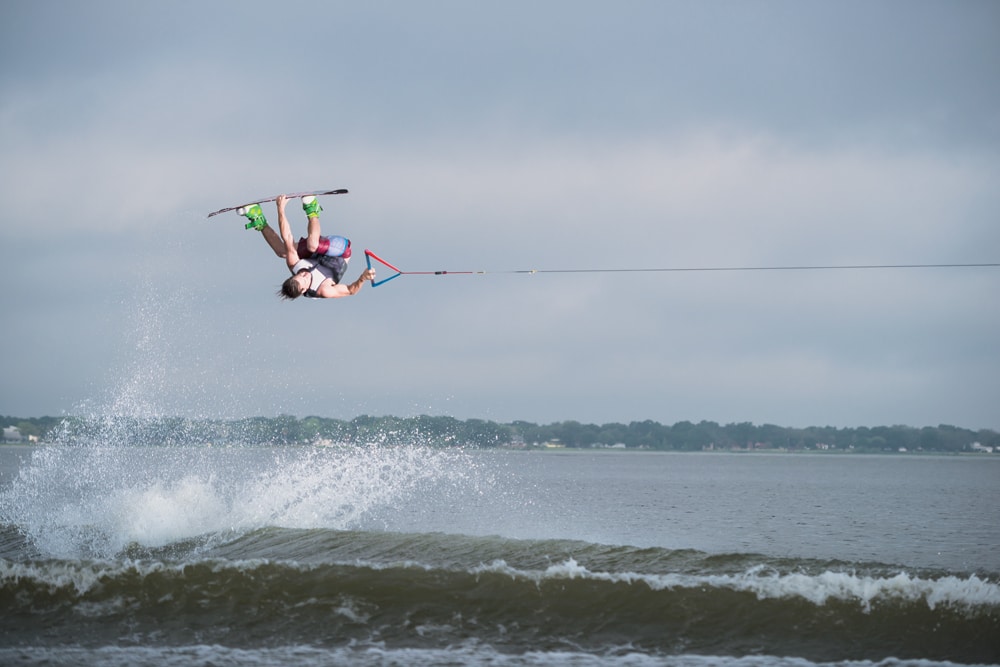
Add a Flip to Your Grab
This is easier said than done. Most first grab attempts will likely result in uncontrolled flip rotation without your hand ever reaching the board. To get over this hurdle quickly, we’ve got a few drills for you to practice.
First, decide which grab you’d like to add to your flip. Practice that grab wake to wake with a frontside shifty. This is important because there is a natural frontside rotation imbedded in the flip. If you plan to add the grab to a roll to revert, then practice that grab with a frontside 180.
Next, do a backside re-entry Ollie and add the desired grab. This is to embed the movement into your muscle memory, and prove to yourself how quickly and easily you can get the grab. This drill is important because if you don’t get the grab early in the flip, the centrifugal force will increase and open up your body position midtrick, keeping the board just out of reach.
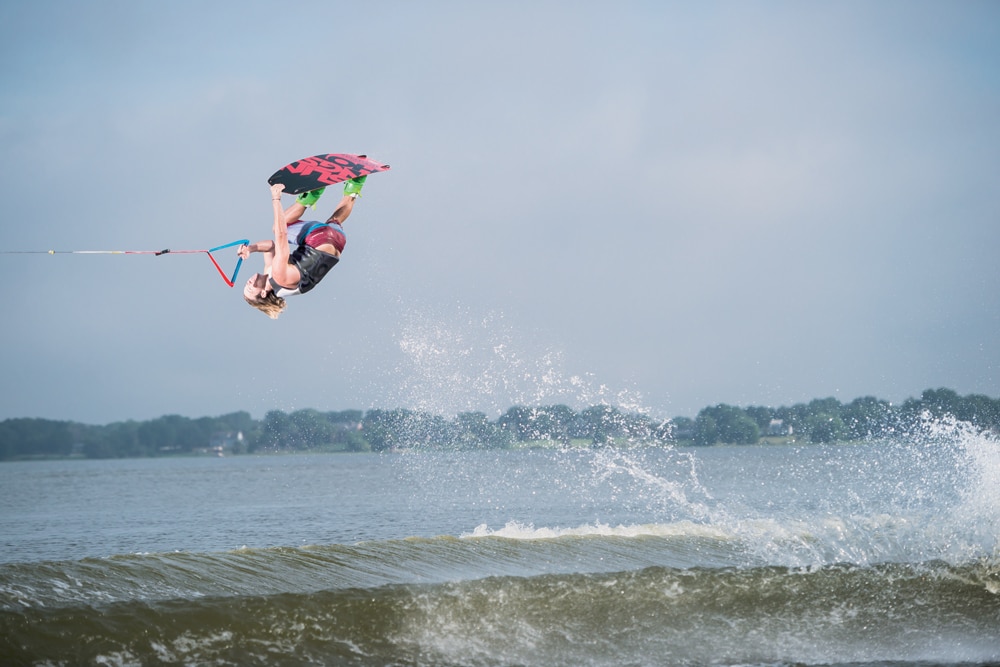
Some grabs also call for different types of back rolls. “My favorite grab to do on a back roll is probably Indy, and that’s the first way I learned to grab it. I change up my cut when I grab it like that though. I don’t edge as hard as I would for an ungrabbed back roll, and I throw my head down instead of up and away over my front shoulder off the wake,” says Jeff. Mexican back rolls generally favor back-hand grabs, and progressive back rolls generally favor front hand grabs, while mute rolls to revert are more like switch toeside back rolls with a heelside take-off.
With any grab, you will need to substitute some of your edge at the wake for a push with your legs. Jeff says: “Don’t edge as hard as you would for an ungrabbed back roll. It will shoot your board away from your hand. Keep a progressive edge, but think about popping straight up and getting the grab. The bottom line is, the harder you edge at the bottom of the wake, the more difficult it will be to get the grab.”
Click here for ROLL TO BLIND——>
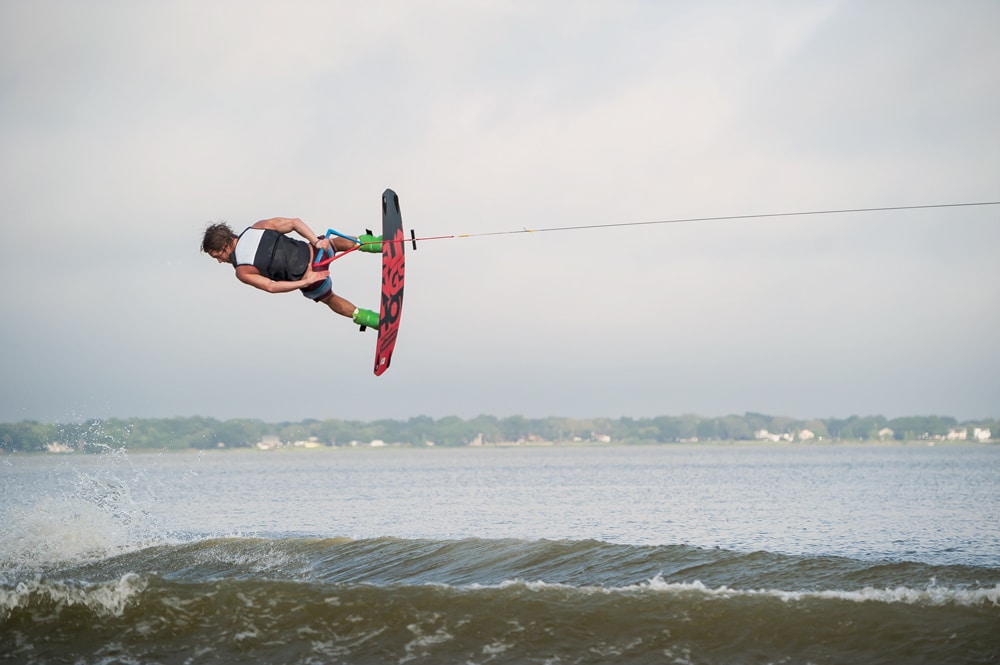
Take It to Blind
Before attempting these, you should decide which type of roll to blind you would like to pursue first — because they both function differently. “There are two ways to do this trick. One is to do the handle pass early — this one is good to learn so you can take it to KGB — and the other is when you do the 180 late,” says Jeff. “I prefer the latter because I can grab it longer before I pass the handle. The best way to learn this one is to have your back roll and a backside 180 on lock 100 percent of the time. It’s also important to be able to spot your landing early on your back roll. If you can do those three things, then this trick won’t be hard for you.”
When you spot your landing, there should be a stall point in the trick where the rotation pauses briefly. This is your window to go to blind. “Once you’ve spotted your landing, then pull the handle to your back hip. The first few tries, you’ll probably pull too hard or too early just because you’ll feel like you’re rushed, but you have plenty of time,” says Jeff.
To decrease impact and risk of injury, feel free to shorten your rope a few feet and slow down a little. This will beef up the wakes a bit, and help you take it straight up and down with a good push from your legs at the wake. Jeff says: “The thing I think about most doing this trick is to cut in and take it straight up. You want a progressive edge, but don’t edge as hard as you would for a regular ungrabbed back roll.”
Whether you prefer to land blind, cuffed or pass the handle, make sure you keep your eyes looking away from the boat to avoid slipping out. Jeff says: “I like to pass it right before I land. That way I can grab for as long as possible and still land smoothly. I think those and Pete’s look the smoothest when you pass the handle right as you land.”







